Rafael Ballabriga
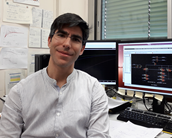 Rafael Ballabriga is a graduate of the Ramon Llull University in Barcelona (BSc 2000, MSc 2002). In 2004, he joined CERN microelectronics group, Geneva (Switzerland), in the framework of the CERN Doctoral Student Program to work in the design and characterization of hybrid pixel detectors.
Rafael Ballabriga is a graduate of the Ramon Llull University in Barcelona (BSc 2000, MSc 2002). In 2004, he joined CERN microelectronics group, Geneva (Switzerland), in the framework of the CERN Doctoral Student Program to work in the design and characterization of hybrid pixel detectors.
Rafael Ballabriga received the IEEE NPSS Best Student Paper Award in 2006. He defended his PhD thesis entitled “The Design and Implementation in 0.13um CMOS of an Algorithm Permitting Spectroscopic Imaging with High Spatial Resolution for Hybrid Pixel Detectors” in 2009 for which he received the best thesis award of the Ramon Llull university doctoral programme 2009-2010. In 2013 he received the IEEE Nuclear and Plasma Sciences Society Radiation Instrumentation Early Career Award.
Rafael Ballabriga has coached younger designers in the design of front-ends in CMOS technologies. Holds three patents and has authored or co-authored more than 70 peer-reviewed journal publications.
Michael Campbell
Ricardo Carmona
Marco Carminati
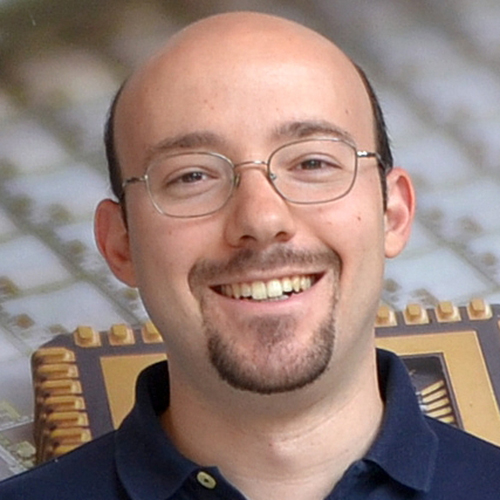 Marco Carminati is a tenure-track Assistant Professor of Electronics at Politecnico di Milano (Italy). He received B.Sc. and M.Sc. in Electronic Engineering, both magna cum laude from Politecnico di Milano, in 2003 and 2005 respectively. In 2008 he was visiting researcher at MIT and in 2009 he completed his Ph.D. at Politecnico. His research activity focuses on low-noise electronics, miniaturized sensors, solid-state radiation detectors, instrumentation, medical diagnostics and imaging. He is IEEE Senior Member and serves as Associate Editor of IEEE TBioCAS. He has been TPC member of CLABIO’12, DUST’14-’16, ICECS’18-‘19-‘20 and BioCAS’20. He has been awarded 3 best paper awards (IEEE ICECS’12, SSD’14 and ISCAS’19). He teaches “Biochips” and “Fundamentals of Electronics” at Politecnico and has contributed to several international Ph.D. schools. He was keynote speaker at IWIS’14, Eurosensors’16 and tutorial speaker at BioCAS’19. He has authored or co-authored more than 160 peer-reviewed international publications, 12 book chapters and holds 4 patents.
Marco Carminati is a tenure-track Assistant Professor of Electronics at Politecnico di Milano (Italy). He received B.Sc. and M.Sc. in Electronic Engineering, both magna cum laude from Politecnico di Milano, in 2003 and 2005 respectively. In 2008 he was visiting researcher at MIT and in 2009 he completed his Ph.D. at Politecnico. His research activity focuses on low-noise electronics, miniaturized sensors, solid-state radiation detectors, instrumentation, medical diagnostics and imaging. He is IEEE Senior Member and serves as Associate Editor of IEEE TBioCAS. He has been TPC member of CLABIO’12, DUST’14-’16, ICECS’18-‘19-‘20 and BioCAS’20. He has been awarded 3 best paper awards (IEEE ICECS’12, SSD’14 and ISCAS’19). He teaches “Biochips” and “Fundamentals of Electronics” at Politecnico and has contributed to several international Ph.D. schools. He was keynote speaker at IWIS’14, Eurosensors’16 and tutorial speaker at BioCAS’19. He has authored or co-authored more than 160 peer-reviewed international publications, 12 book chapters and holds 4 patents.
Edoardo Charbon
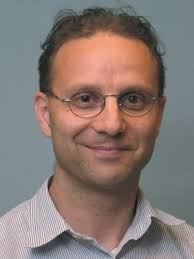 Edoardo Charbon (SM’00–F’17) received the Diploma from ETH Zurich, the M.S. from the University of California at San Diego, and the Ph.D. from the University of California at Berkeley in 1988, 1991, and 1995, respectively, all in Electrical Engineering and EECS. He has consulted with numerous organizations, including Bosch, X-Fabs, Texas Instruments, Maxim, Sony, Agilent, and the Carlyle Group. He was with Cadence Design Systems from 1995 to 2000 and with Canesta from 2000 to 2002. Since 2002 he is a member of the faculty of EPFL, full professor since 2015. From 2008 to 2016 he was full professor and Chair of VLSI design with Delft University of Technology. He has been the driving force behind the creation of CMOS SPAD technology, which is mass produced since 2015 and the core of telemeters, proximity sensors, and medical diagnostics. His interests span from 3-D vision, LiDAR, FLIM, FCS, NIROT to super-resolution microscopy, time-resolved Raman spectroscopy, and cryo-CMOS circuits and systems for quantum computing. He has authored or co-authored over 350 papers and two books, and he holds 21 patents. He has received several best paper awards and the prestigious award for best academic research team in Europe (London, 2019). Dr. Charbon is a distinguished visiting scholar of the W. M. Keck Institute for Space at Caltech, a fellow of the Kavli Institute of Nanoscience Delft, and a fellow of the IEEE.
Edoardo Charbon (SM’00–F’17) received the Diploma from ETH Zurich, the M.S. from the University of California at San Diego, and the Ph.D. from the University of California at Berkeley in 1988, 1991, and 1995, respectively, all in Electrical Engineering and EECS. He has consulted with numerous organizations, including Bosch, X-Fabs, Texas Instruments, Maxim, Sony, Agilent, and the Carlyle Group. He was with Cadence Design Systems from 1995 to 2000 and with Canesta from 2000 to 2002. Since 2002 he is a member of the faculty of EPFL, full professor since 2015. From 2008 to 2016 he was full professor and Chair of VLSI design with Delft University of Technology. He has been the driving force behind the creation of CMOS SPAD technology, which is mass produced since 2015 and the core of telemeters, proximity sensors, and medical diagnostics. His interests span from 3-D vision, LiDAR, FLIM, FCS, NIROT to super-resolution microscopy, time-resolved Raman spectroscopy, and cryo-CMOS circuits and systems for quantum computing. He has authored or co-authored over 350 papers and two books, and he holds 21 patents. He has received several best paper awards and the prestigious award for best academic research team in Europe (London, 2019). Dr. Charbon is a distinguished visiting scholar of the W. M. Keck Institute for Space at Caltech, a fellow of the Kavli Institute of Nanoscience Delft, and a fellow of the IEEE.
Federico Faccio
 Federico Faccio is the leader of the Microelectronics section at CERN in Geneva, Switzerland. He received the M.S. degree in physics from the University of Turin, Italy (1991) and the Ph.D. degree from INPG in Grenoble, France (1997). He joined CERN in 1991, where he has been mainly involved in the study of the radiation effects on semiconductor technologies and has contributed to the design of radiation-hard ASICs. He played a key role in the introduction of Hardness-By-Design (HBD) techniques for ASIC design in High Energy Physics, he initiated and co-authored the simulation work to estimate Single Event Upset (SEU) rates in an accelerator environment, and recently led the CERN development of radiation- and magnetic-field tolerant DCDC converters. He has authored and co-authored more than 100 technical papers in journals and conference proceedings, receiving awards at the NSREC (Nuclear and Space Radiation Effects), RADECS (Radiation Effects on Components and Systems) and ECCE (Energy Conversion Congress and Exposition) conferences.
Federico Faccio is the leader of the Microelectronics section at CERN in Geneva, Switzerland. He received the M.S. degree in physics from the University of Turin, Italy (1991) and the Ph.D. degree from INPG in Grenoble, France (1997). He joined CERN in 1991, where he has been mainly involved in the study of the radiation effects on semiconductor technologies and has contributed to the design of radiation-hard ASICs. He played a key role in the introduction of Hardness-By-Design (HBD) techniques for ASIC design in High Energy Physics, he initiated and co-authored the simulation work to estimate Single Event Upset (SEU) rates in an accelerator environment, and recently led the CERN development of radiation- and magnetic-field tolerant DCDC converters. He has authored and co-authored more than 100 technical papers in journals and conference proceedings, receiving awards at the NSREC (Nuclear and Space Radiation Effects), RADECS (Radiation Effects on Components and Systems) and ECCE (Energy Conversion Congress and Exposition) conferences.
David Gascón
 D. Gascon received a BSc degree in electronics engineering from University Ramon Llull, Spain, in 1998, and a PhD degree in electronics from University of Barcelona, Spain in 2008.
D. Gascon received a BSc degree in electronics engineering from University Ramon Llull, Spain, in 1998, and a PhD degree in electronics from University of Barcelona, Spain in 2008.
Currently he is working in the instrumentation group of the Institute of Cosmos Sciences of the University of Barcelona (ICCUB), Spain. He is also the Technical Coordinator of the ICCUB.
His research activity is in the area of mixed signals circuits for high energy physics, astrophysics experiments and medical imaging. Particularly, he is interested in ASIC design for fast photodetector readout and front-end electronics. He has authored or co-authored more than 60 papers related to these subjects.
Antonio González
 Antonio J. González Martínez is a researcher at the Spanish National Research Council (CSIC), working on the development of molecular imaging systems, with a stronger focus on Positron Emission Tomography (PET) and their compatibility with Magnetic Resonance (MR), since 2006. He currently leads the Detectors for Molecular Imaging Lab with 13 team members, at the Institute for Instrumentation in Molecular Imaging, i3M.
Antonio J. González Martínez is a researcher at the Spanish National Research Council (CSIC), working on the development of molecular imaging systems, with a stronger focus on Positron Emission Tomography (PET) and their compatibility with Magnetic Resonance (MR), since 2006. He currently leads the Detectors for Molecular Imaging Lab with 13 team members, at the Institute for Instrumentation in Molecular Imaging, i3M.
Antonio J. obtained his Physics Degree in 2002 at the Uni. Valencia. In 2005 obtained the Physics Doctorate at the Uni. Heidelberg in Germany, work carried out at the Max Planck Institute for Nuclear. He obtained one of the few and most recognized postdoc grants in Spain called Ramon y Cajal (2015). Antonio J. has developed dedicated organ-specific PET systems and has scientifically coordinated two EU projects (FP6 and FP7). The first EU project, called MAMMI, ended in 2010 with such a significant success that the European Commission is advertising as model. The second EU project referred to the construction of a high performance simultaneous brain PET-MR scanner. He is currently coordinating the instrumentation efforts of an ERC Advanced grant in which photoelectric and Compton events will be separately detected. He is the PI of the national project “Desarrollo del hardware para sistema de diagnóstico por imagen molecular para corazón en condiciones de estrés” (TEC2016-79884). Antonio has recently (Dec-2019) obtained a grant from CSIC for an international collaboration in between the Uni. Washington and CERN. Moreover, Antonio has led the development of a small animal PET based on monolithic scintillators, currently commercialized by the multinational Bruker with +50 installed systems worldwide, including PET inserts for high field MRI.
The breadth of my work with my colleagues and numerous students is reflected in the scientific literature and at conferences, including: first author of about 20 peer-reviewed publications and co-author of 60 more. I am co-author of about 50 conference proceeding, with an h-index of 19 (Jan-2020). I have successfully directed 6 PhD theses and is currently supervising four more concerning about the design of a gamma ray detectors, system development, simulations or image reconstruction.
Erik Heijne
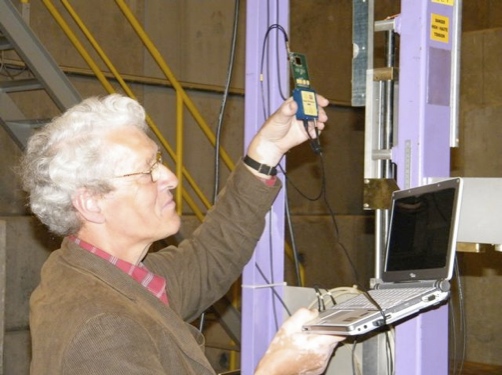 Erik H.M. Heijne studied physics at the University of Amsterdam, where as a student he collaborated in projects on storage of hydrogen/deuterium in palladium (1969) and on quantum effects in thin silicon films (1970). He came in 1973 to CERN in Geneva, to work on silicon detectors for the monitoring of the neutrino beams. On this subject he earned his PhD in 1983 at the University of Amsterdam. In 1980 he demonstrated the silicon microstrip detector in particle physics, which opened new ways for charm and beauty physics. This earned him the 2017 European Physical Society Prize in High Energy Physics, with Robert Klanner and Gerhard Lutz, who implemented this instrument in the CERN NA11 experiment. After a stay in Leuven (B) 1984-85 he started with Pierre Jarron in 1986 the microelectronics design group at CERN. An important initiative was the development of an imager-like silicon particle detector for parallel, high rate position and time determination of multiple simultaneous particles, at first named 'micropattern detector' but now widely known as silicon pixel detector. Together with Michael Campbell at CERN, in the framework of the LAA project and the RD19 collaboration, the first complete demonstration of a hybrid pixel detector was given in 1991, in a heavy ion experiment in the Omega spectrometer. Around 1995 he introduced at CERN the ideas for radiation hardness of chips by design, which eventually facilitated the widespread use of custom-designed monolithic CMOS chips in the LHC collider experiments. His interests center on the applications of advanced CMOS technology and various sensor materials for imaging of particle interactions and other physics phenomena involving radiation. He is a Fellow of the IEEE and besides the EPS-HEP 2017 Prize already mentioned, he received in 1999 the Merit Award of the IEEE Nuclear and Plasma Sciences Society.
Erik H.M. Heijne studied physics at the University of Amsterdam, where as a student he collaborated in projects on storage of hydrogen/deuterium in palladium (1969) and on quantum effects in thin silicon films (1970). He came in 1973 to CERN in Geneva, to work on silicon detectors for the monitoring of the neutrino beams. On this subject he earned his PhD in 1983 at the University of Amsterdam. In 1980 he demonstrated the silicon microstrip detector in particle physics, which opened new ways for charm and beauty physics. This earned him the 2017 European Physical Society Prize in High Energy Physics, with Robert Klanner and Gerhard Lutz, who implemented this instrument in the CERN NA11 experiment. After a stay in Leuven (B) 1984-85 he started with Pierre Jarron in 1986 the microelectronics design group at CERN. An important initiative was the development of an imager-like silicon particle detector for parallel, high rate position and time determination of multiple simultaneous particles, at first named 'micropattern detector' but now widely known as silicon pixel detector. Together with Michael Campbell at CERN, in the framework of the LAA project and the RD19 collaboration, the first complete demonstration of a hybrid pixel detector was given in 1991, in a heavy ion experiment in the Omega spectrometer. Around 1995 he introduced at CERN the ideas for radiation hardness of chips by design, which eventually facilitated the widespread use of custom-designed monolithic CMOS chips in the LHC collider experiments. His interests center on the applications of advanced CMOS technology and various sensor materials for imaging of particle interactions and other physics phenomena involving radiation. He is a Fellow of the IEEE and besides the EPS-HEP 2017 Prize already mentioned, he received in 1999 the Merit Award of the IEEE Nuclear and Plasma Sciences Society.
Xavier Llopart
Angelo Rivetti
Ángel Rodríguez
Santiago Royo
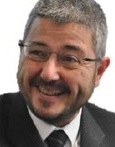 Santiago Royo, PhD, is currently professor at Universitat Politècnica de Catalunya and Director of the CD6 -Centre for the Development of Sensors, Instrumentation and Systems, a Research Centre devoted to research and innovation in the field of Optical Engineering. He is also member of the Board of Stakeholders of Photonics21, and co-secretary of the Spanish Platform for Photonics Fotónica21. He is author of over 50 peer-reviewed publications, 6 book chapters, and a total of 17 patents, 11 of them licensed to four different companies. He is co-founder of three photonics-based spin-off companies: SnellOptics (2002,Terrassa, Spain), devoted to marketing quality plastic optical components; ObsTech SpA (2012, Santiago, Chile) commercializing systems for internet-controlled telescopes, and Beamagine SL (Castellbisbal 2016), commercializing lidar and advanced imaging solutions. He has participated and led research projects involving different optical metrology techniques for the last 20 years, both with public and private funding.
Santiago Royo, PhD, is currently professor at Universitat Politècnica de Catalunya and Director of the CD6 -Centre for the Development of Sensors, Instrumentation and Systems, a Research Centre devoted to research and innovation in the field of Optical Engineering. He is also member of the Board of Stakeholders of Photonics21, and co-secretary of the Spanish Platform for Photonics Fotónica21. He is author of over 50 peer-reviewed publications, 6 book chapters, and a total of 17 patents, 11 of them licensed to four different companies. He is co-founder of three photonics-based spin-off companies: SnellOptics (2002,Terrassa, Spain), devoted to marketing quality plastic optical components; ObsTech SpA (2012, Santiago, Chile) commercializing systems for internet-controlled telescopes, and Beamagine SL (Castellbisbal 2016), commercializing lidar and advanced imaging solutions. He has participated and led research projects involving different optical metrology techniques for the last 20 years, both with public and private funding.
Francesc Salvat
Francesc Salvat-Pujol received a PhD degree from the Technische Universität Wien in 2012 for his work on the emission of secondary electrons from solids under electron bombardment, using a custom built time-of-flight coincidence spectrometer, combined with the theoretical modelling of electron interactions in solids within the semiclassical
dielectric formalism, and the Monte Carlo simulation of sub-keV electron transport near solid surfaces with a custom-written code.
After a postdoctoral stay at the Goethe Universität Frankfurt (2012-2015), developing applications based on density functional theory to study electronic and magnetic properties of novel materials from first principles, Francesc joined the National Institute of Standards and Technology (NIST) to work on a refined electron transport model for
NIST's Monte Carlo tool for nanoscale metrology with electron beams (JMONSEL). In late 2016, Francesc joined CERN as an applied physicist working among other on the refinement and extension of low-energy hadron-nucleus interaction models in the general-purpose Monte Carlo simulation code FLUKA.
D. Schaart
Ferran Serra-Graells
Walter Snoeys
 Walter Snoeys received the MS and Ph.D. degrees in electrical engineering from the Katholieke Universiteit Leuven in 1987, and from Stanford University in 1992, respectively. In 1987 he received the Procter and Gamble ETC Fellowship from the Belgian American Educational Foundation. From 1990 to 1992 he was a consultant in the area of integrated sensors. From 1992 to 1994 he worked on CMOS technology integration in Mietec, Alcatel, Belgium. In 1994 he joined the microelectronics group at CERN, Geneva, Switzerland. Since his Ph.D. work on a monolithic pixel detector for high energy physics, he has been working almost continuously on monolithic sensors, particle detectors and pixel sensor readout circuits, and recently on CMOS monolithic sensors for the ALICE ITS and ATLAS ITk upgrades.
Walter Snoeys received the MS and Ph.D. degrees in electrical engineering from the Katholieke Universiteit Leuven in 1987, and from Stanford University in 1992, respectively. In 1987 he received the Procter and Gamble ETC Fellowship from the Belgian American Educational Foundation. From 1990 to 1992 he was a consultant in the area of integrated sensors. From 1992 to 1994 he worked on CMOS technology integration in Mietec, Alcatel, Belgium. In 1994 he joined the microelectronics group at CERN, Geneva, Switzerland. Since his Ph.D. work on a monolithic pixel detector for high energy physics, he has been working almost continuously on monolithic sensors, particle detectors and pixel sensor readout circuits, and recently on CMOS monolithic sensors for the ALICE ITS and ATLAS ITk upgrades.
Renato Turchetta
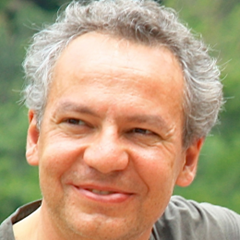 Dr Renato Turchetta received the M.S. degree from the University of Milan (Italy) in 1988 and a Ph.D. from the University of Strasbourg (France) in 1991. In 1999 he joined the Rutherford Appleton Laboratory in the UK, where he started, grew and led a design group developing CMOS image sensors, including the following products: a 16 million, radiation-hard image sensors for the direct detection of electrons and a global shutter, 5 million frames per second, megapixel image sensor. In 2014 he co-founded Vivamos Ltd., set up to commercialise his 6.7 megapixel, wafer-scale, video rate CMOS image sensors. He was executive director of the company until the end of 2016. He then co-founded IMASENIC to develop custom CMOS image sensors. He is member of the Advisory Board for the annual Image Sensors Europe conference since 2011. He also authored or co-authored over 100 papers in peer-review journals and 10 patents.
Dr Renato Turchetta received the M.S. degree from the University of Milan (Italy) in 1988 and a Ph.D. from the University of Strasbourg (France) in 1991. In 1999 he joined the Rutherford Appleton Laboratory in the UK, where he started, grew and led a design group developing CMOS image sensors, including the following products: a 16 million, radiation-hard image sensors for the direct detection of electrons and a global shutter, 5 million frames per second, megapixel image sensor. In 2014 he co-founded Vivamos Ltd., set up to commercialise his 6.7 megapixel, wafer-scale, video rate CMOS image sensors. He was executive director of the company until the end of 2016. He then co-founded IMASENIC to develop custom CMOS image sensors. He is member of the Advisory Board for the annual Image Sensors Europe conference since 2011. He also authored or co-authored over 100 papers in peer-review journals and 10 patents.

